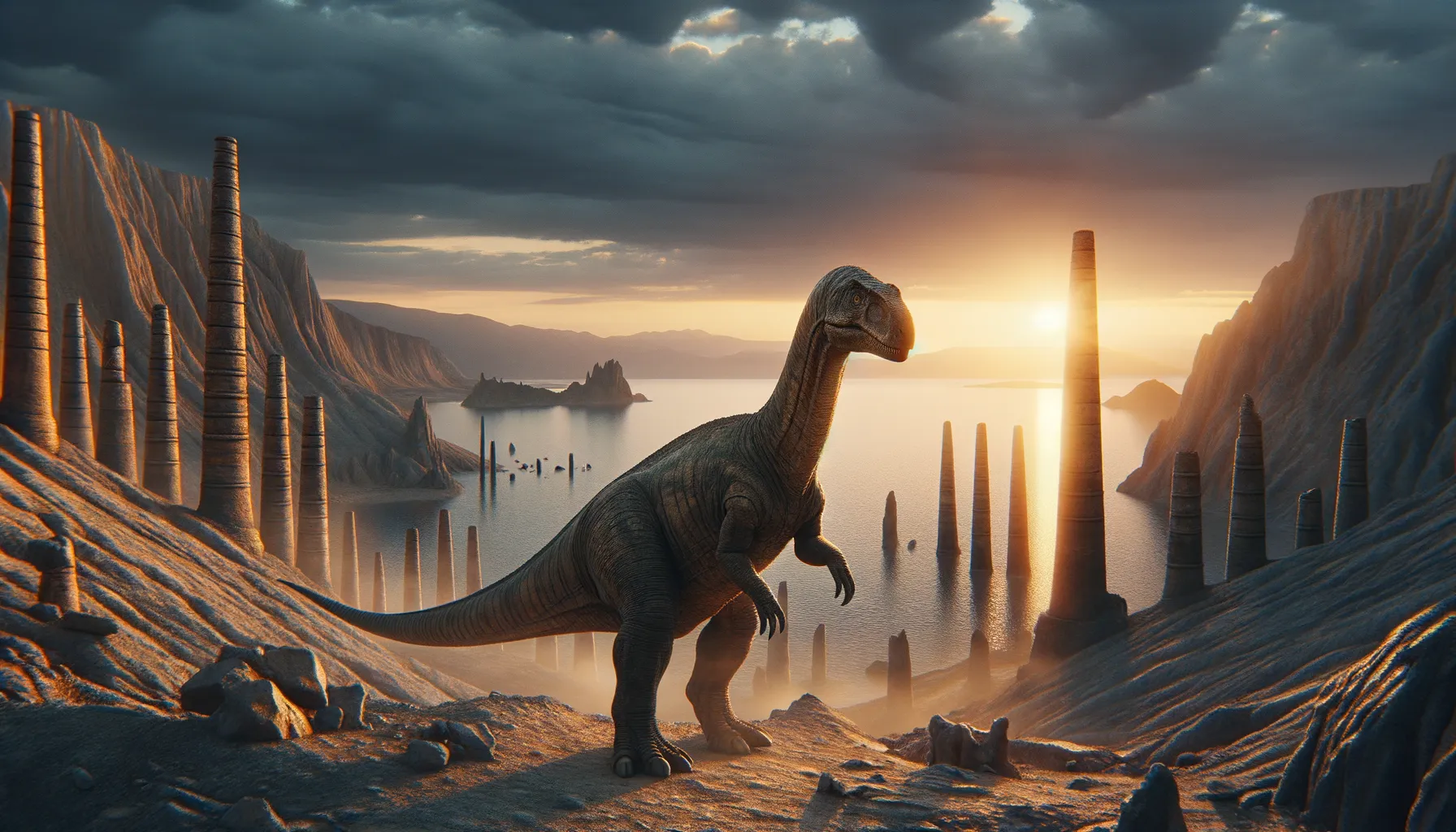
Tazoudasaurus
A Jurassic giant from Morocco's past.
Period
Jurassic
Length
About 9 meters long.
Height
Approximately 5 meters tall.
Weight
Estimated between 10 and 15 tons.
Tazoudasaurus was a relatively small sauropod dinosaur that roamed the Earth during the Early Jurassic period. Known for its long neck and tail, this dinosaur was one of the earlier members of the sauropods, the iconic group of long-necked dinosaurs. Its discovery in Morocco provided important insights into the evolution and spread of sauropods across the globe.
Diet
Tazoudasaurus was a herbivore, feeding primarily on low-lying plants and ferns. Its long neck allowed it to reach vegetation that was out of reach for other contemporaneous herbivores, aiding its survival.
Hunting
As a plant-eater, Tazoudasaurus didn't hunt for meat. Instead, it likely spent much of its day browsing and foraging for plants. This gentle giant used its long neck to access foliage in various ecological niches.
Environmental challenges
During its time, Tazoudasaurus faced fluctuating climates that could influence available vegetation. It had to adapt to potential droughts or changes in plant life, which could impact its food sources. Additionally, young Tazoudasaurus may have been vulnerable to predators, requiring group living for protection.
Speed
Likely slow due to its massive size and long neck.
Lifespan
Estimated around 50 to 75 years, like other sauropods.
First discovery
First discovered in Morocco in the early 2000s.
Fun Facts
- Tazoudasaurus was a long-necked dinosaur that lived about 180 million years ago during the Early Jurassic period.
- This dinosaur was relatively small for a sauropod, measuring only about 30 feet in length.
- Tazoudasaurus fossils were first discovered in the Tazouda region of Morocco, which is how it got its name.
- It is one of the earliest known sauropods, providing important clues about the evolution of these giant long-necked dinosaurs.
- Tazoudasaurus likely traveled in herds for safety, a behavior seen in many later sauropods.
- Despite its size, Tazoudasaurus was a plant-eater, feasting on the lush vegetation of its time.
- The fossils of Tazoudasaurus often have bite marks from ancient carnivores, indicating it was preyed upon by other dinosaurs.
Growth and Development
Tazoudasaurus grew rapidly after birth to reach its massive adult size, a characteristic trait of sauropods. Its long bones suggest a fast growth rate with continuous development throughout its life. This rapid growth was crucial for survival, reducing its vulnerability to predators.
Habitat
Tazoudasaurus inhabited areas with lush vegetation alongside rivers and floodplains. The regions it roamed were likely warm and wet, supporting a rich diversity of plant life. This environment provided ample resources for its herbivorous diet.
Interaction with other species
Coexisting with other herbivores and predators, Tazoudasaurus formed part of a dynamic ecosystem. It likely moved in herds, which provided safety and helped in finding new feeding grounds. Its size made it less susceptible to attacks by predators.
Natural lifespan
Tazoudasaurus had a natural lifespan similar to other large sauropods, living potentially for several decades.
Reproduction
Tazoudasaurus likely laid eggs, as inferred from other sauropod fossils. The young likely hatched fully developed but small, growing quickly through their early years. Parental care was possibly minimal, with newborns relying on instinct and herd protection.
Social behaviour
Tazoudasaurus likely moved in groups, exhibiting herd behavior common among sauropods for protection and communal feeding. These social structures may have facilitated joint movements to new feeding grounds and defense against predators.
Fossil locations
The primary fossil discoveries of Tazoudasaurus have been in the High Atlas Mountains of Morocco. These finds are significant as they provide insights into early sauropod evolution and distribution. The well-preserved fossils found there have helped paleontologists understand its anatomy and lifestyle.
